Amie Renaud recounts her exciting week sailing across the Straight of Georgia aboard Tula.
The best way to describe a week sailing on Tula is being in a state of complete bliss. You are truly oblivious to everything else but the wind, the waves and the sea.
-Amie Renaud
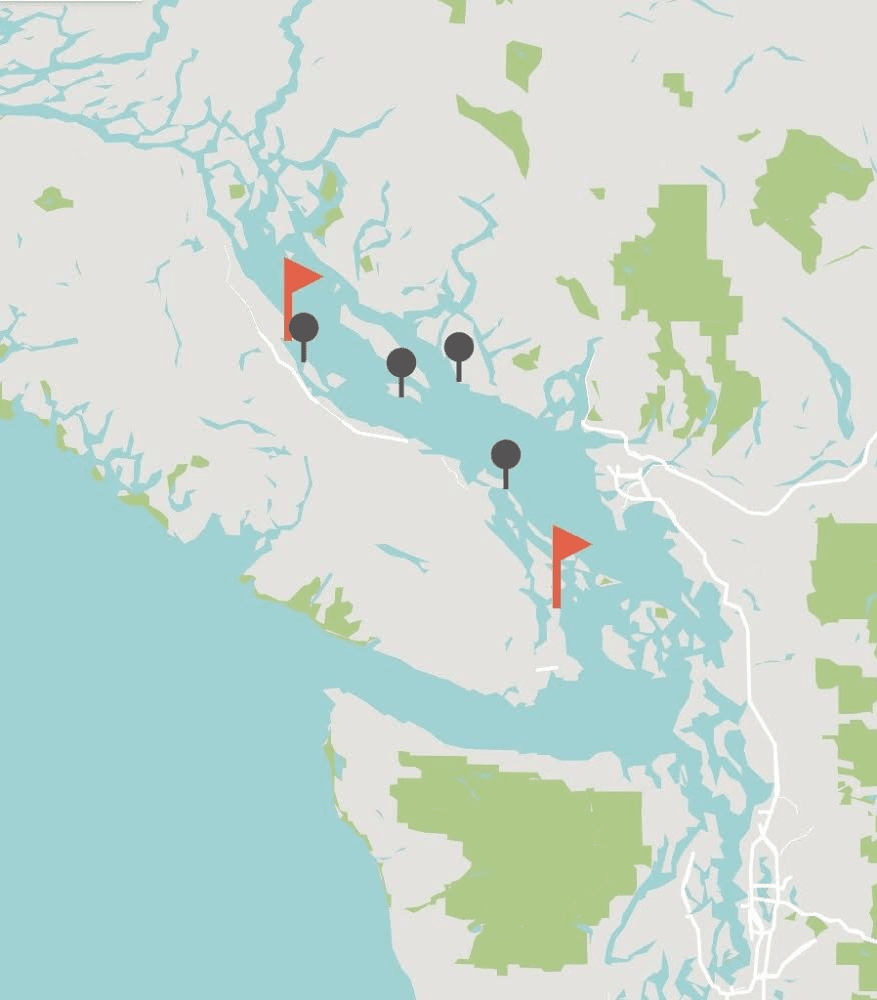
Do you ever get that urge to leave everything behind for a grand adventure?
I certainly do. Last year I did something drastic to find it, leaving my apartment, belongings and job behind solo-cycle 3,000km from my home in Victoria, BC to Tijuana, Mexico).
So when Peter Simpson — affectionately known as Cap'n Pedro — proposed a week aboard Tula, his 39' Beneteau, I couldn't say no!
I have been sailing dinghies most of my life. In fact, I spent 9 years as a dinghy instructor teaching others how to do so. Despite this, I still know very little about sailing larger vessels, and as a lake sailor, ocean tides and currents tend to still confuse me.
For the next week, I would finally begin to learn the fundamentals of ocean navigation, practice navigating narrow channels, safely anchor in coves for the night and get the hang of docking a vessel this size, all under the careful watch of a very skilled and experience Cruising Instructor.
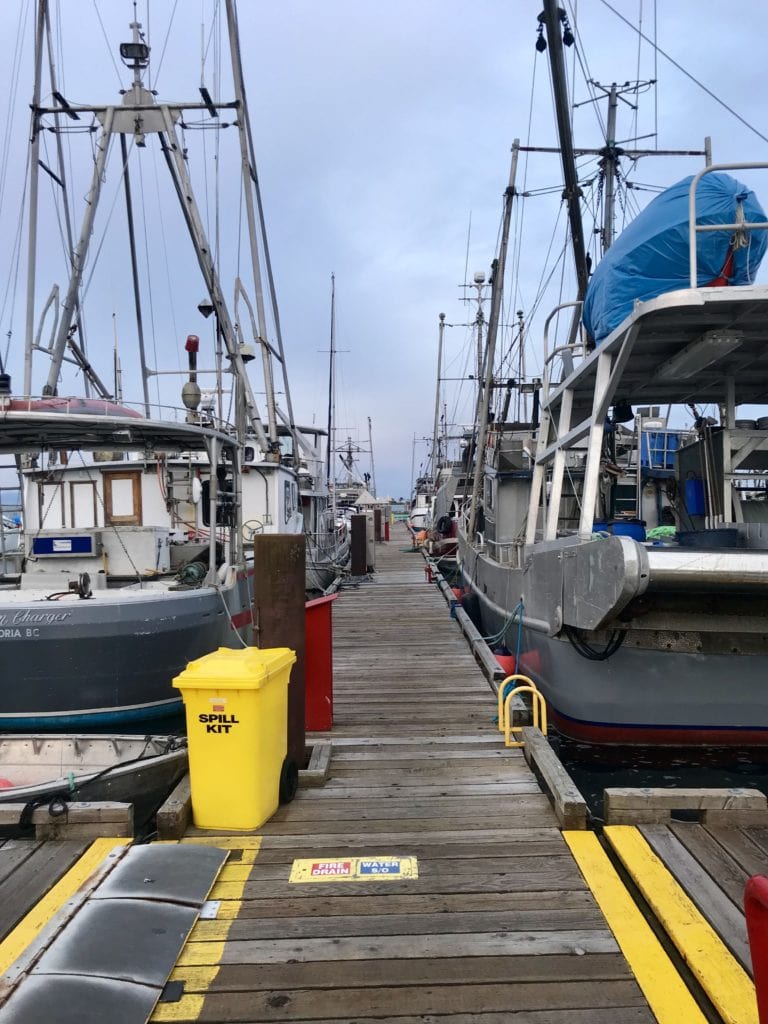
Day 1: Sailing from Comox Harbour
I hop on a bus leaving Victoria heading to the Comox Bus Depot, where I meet Kellen, my fellow crew member for the week. A short cab ride gets us to the Comox Fisherman's wharf, where Tula has been docked while replenishing for our trip.
We board Tula around dinner time, warmly greeted by our Captain Peter, and join him in the cabin to brief on the plan for the week. We are presented with our itinerary for the week, and review safety protocols for the vessel, then we each settle into our cabins for the night.
Tula is a spacious vessel, with lots of room to move about inside, and all the creature comforts from home, and before we know it, we are waking up at the crack of dawn to get started...how I love those early mornings at sea!
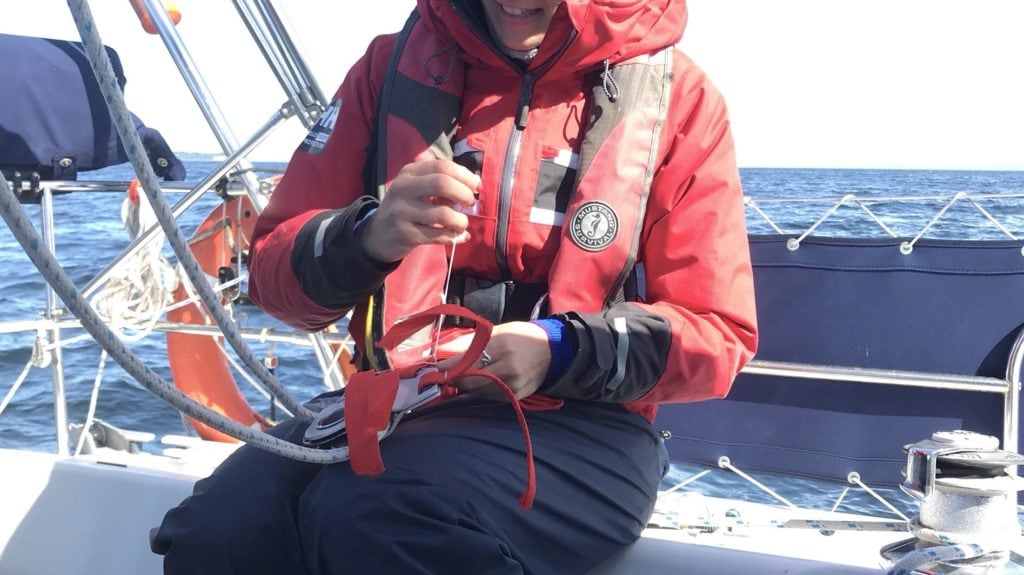
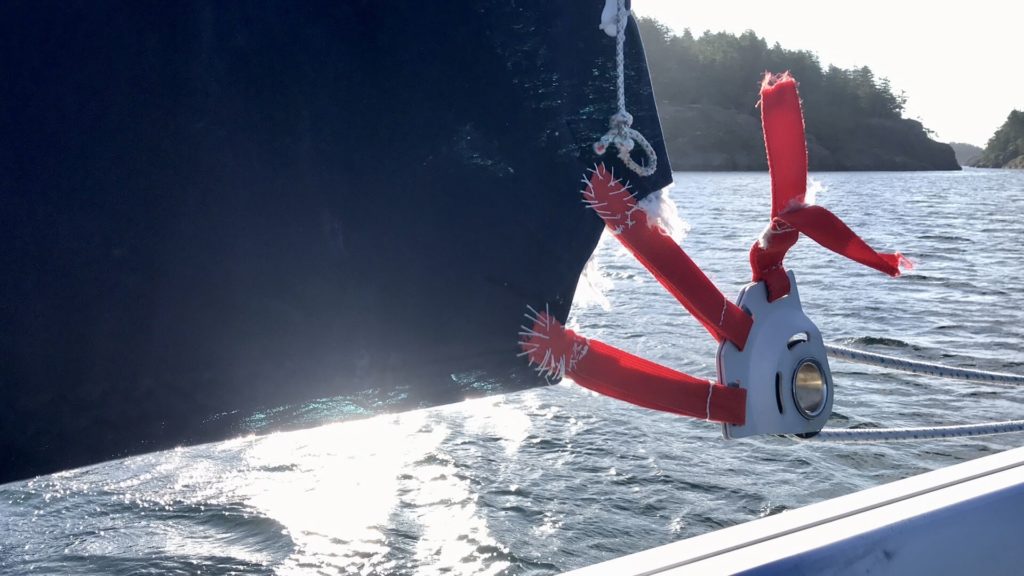
Day 2 : Sailing from Comox Harbour to Little Bull Passage (31.1 Nautical Miles)
It doesn't take long before we encounter our first snag. Less than an hour from departing the harbour that morning and hoisting our sails, a very loud snapping sound takes us all by surprise.
Within seconds, the Clew block (the part of the sail that holds the bottom right corner of the mainsail taught to the end of the Boom) completely shears off leaving the main flapping violently in the wind above our heads.
We quickly spring into action, working as a team to power up the engine, while tossing lines over the mainsail to lash it down and avoid further ripping of the sail / being painfully slapped across the face by an out-of-control sail. Once we have gotten control of the situation, we take a moment to quickly assess the damage: all 3 heavy-duty webbing straps securing the Clew in place have completely sheared off under the strain of the wind and exposure to the elements.
Luckily, we all seem to have a little bit of MacGyver in us and we begin the tedious process of hand sewing a repair using 3 strips of spare webbing, some crafty sewing techniques and brute force to pull the needle through. It is not pretty to look at, but it will last us the remainder of our 5-day trip. Remember to expect the unexpected!
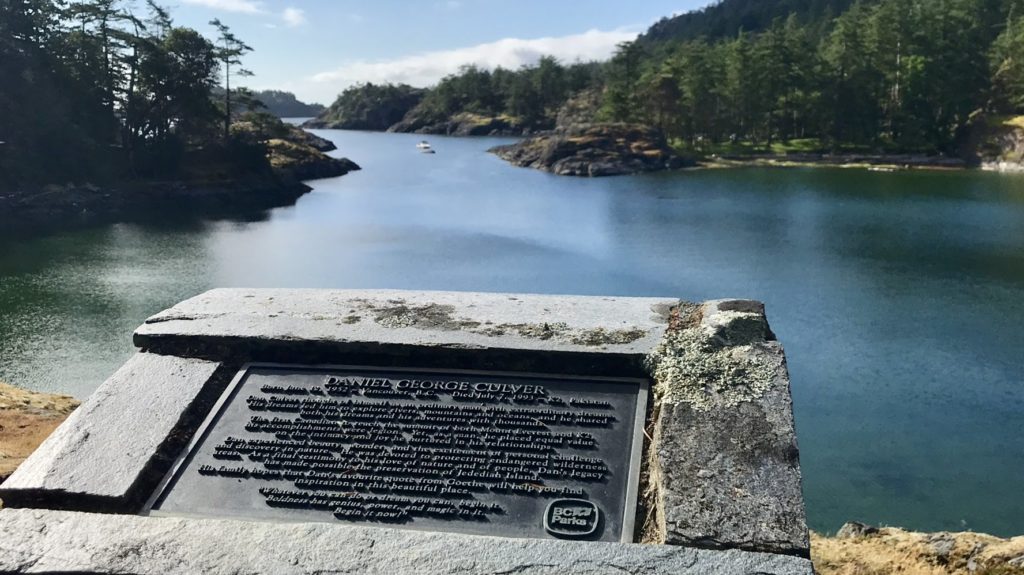
Day 3 : Sailing to Jedidiah Island Marine Park (17.5 Nautical Miles)
For all my fellow Vancouver Islanders, did you know about the island with the pack of wild sheep on it?! You heard me right - Jedidah Island has an interesting family history that has become home to a pack of wild sheep!
Well this was news to me, and as we lowered anchor right beside it, a sheep poked it's head out through the forested cliffside and let out a baaaah at us down below. I couldn't believe what I was seeing, so that next morning, we lowered and carefully dropped Tula's dinghy into the calm waters of our anchorage and all three of us climbed aboard to find the closest beach access point.
Hiking onto this remote island feels like entering a farming era from year's past. Less than 30 minutes into our hike, we are able to see signs of pasture lands from when the island was populated, and the structures of old barns and a small farming house.
It isn't long before we encounter dozens of wild sheep roaming and grazing on grass around us.
These sheep are like nothing I've seen before: they have dense heavy wool coats that drag down to their feet, which are stained by the grass and mud they roam on. And yet they also look completely tranquil; they have an infinite supply of grass to graze on, and no predators to worry about - this is their island.
As we pressed on through the forest, we arrived to the remnants of farm and family home, which was once populated, now abandoned and protected through various land conservancy agreements. Jedidiah Island warrants an entire article of it's own to explain its unique and curious history.
Back on Tula, we hoist the dinghy back up and set sail for Buccaneer Bay, a beautiful white sandy beach cove and the perfect lunch stop/swim stop!! The entire day has me smiling and daydreaming about what the first explorers of these lands must have felt like centuries ago.
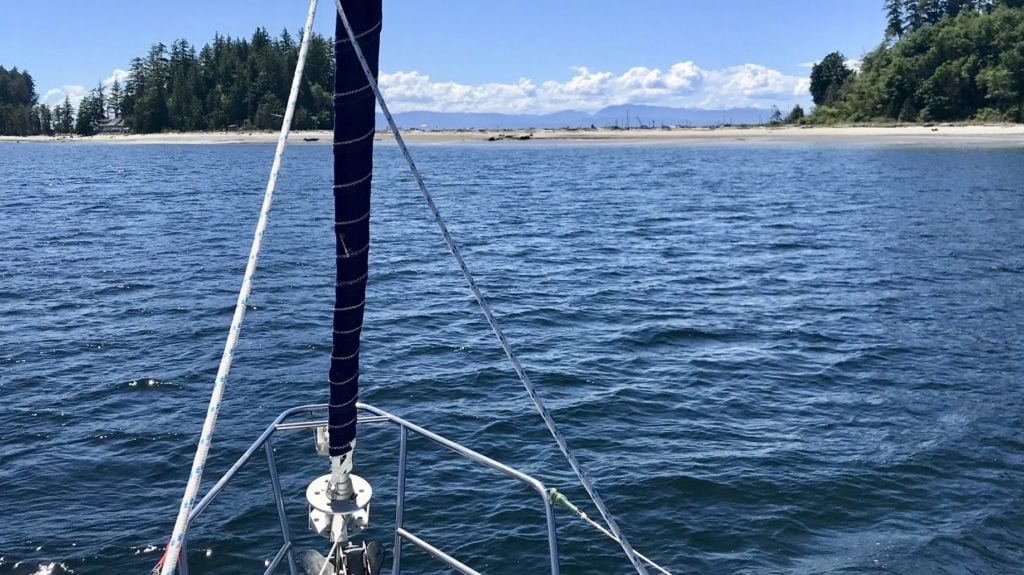
Day 4 : Sailing from Secret Cove to Nanaimo Yacht Club (40.9 Nautical Miles)
There are many factors that contribute to THE perfect sailing day: Strength of the wind (not too light, not too strong), consistency of the wind (is the wind broken up by gusts and lulls?), direction of the wind (is it constantly shifting?) and weather (is it sunny and warm, or cloudy, cold and rainy?).
Today we hit the JACKPOT! The weather, wind and waves are so perfect for our sail across the Straight of Georgia. We have the perfect heel to the boat and soak up the sun as we head towards Nanaimo Harbour, our first port visit since we left Comox Harbour two nights ago.
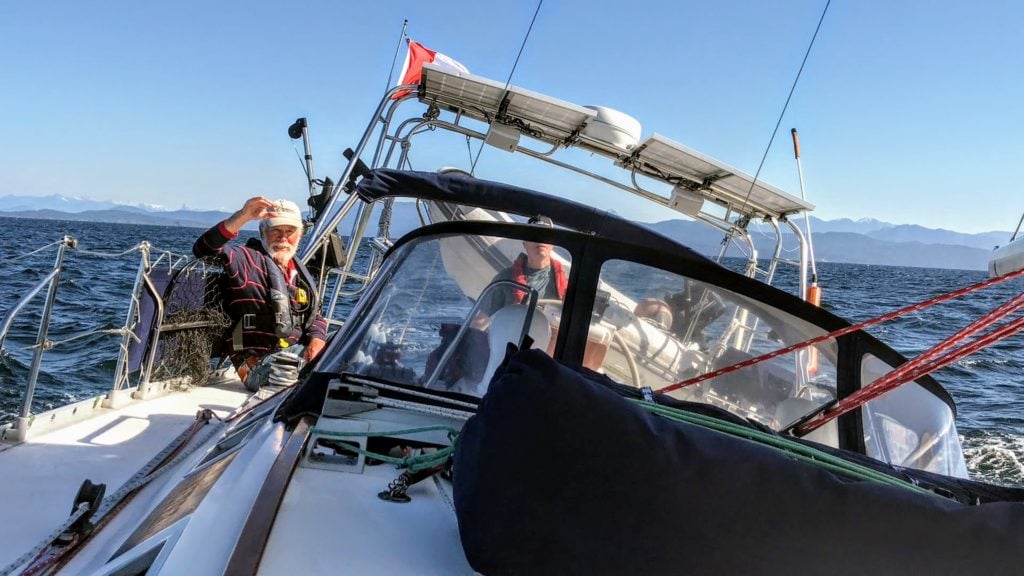
It is now time to practice practice our docking skills as we will need to fuel up at Nanaimo Harbour's Gas Dock and then dock for the evening at Nanaimo Yacht Club's Visitor Dock.
After so many years of coaching, I can probably dock an inflatable coach boat or 16 foot dinghy with my eyes closed, but attempting to dock a vessel 4 times that size feet away from $150,000 pristine boats is one of the more nerve-wracking things I have done...
With expert guidance from our Cap'n and Instructor Peter, we both manage to dock Tula, and breath sighs of relief!
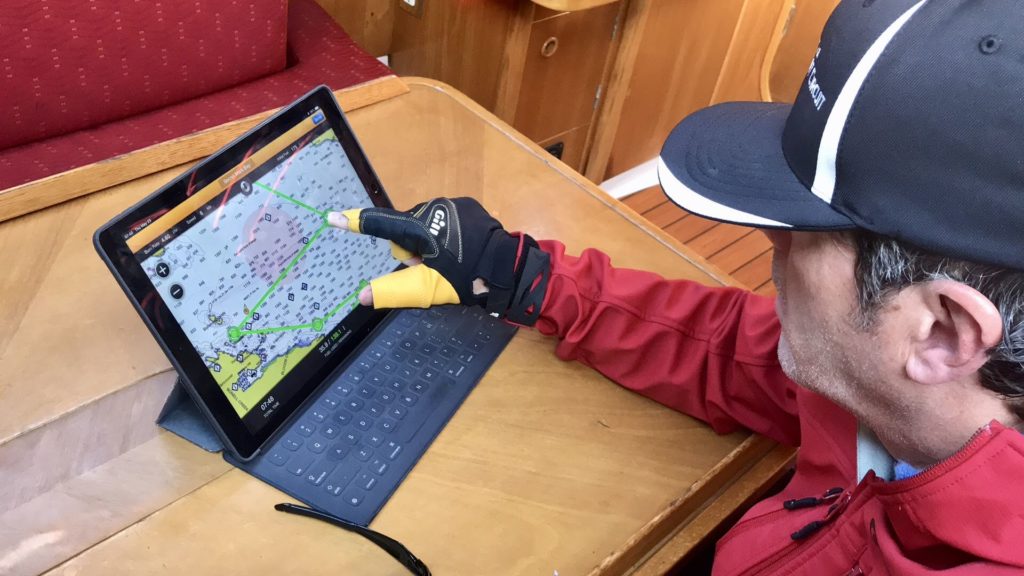
Day 5 : Sailing from Nanaimo Yacht Club to Sidney North Saanich (43.73 Nautical Miles)
Wedged between Vancouver Island and Mudge Island is Dodd Narrows, a very narrow channel that allows passage to vessels heading to and from Nanaimo. The channel is so narrow in fact, that boaters politely wait their turn to pass through as there is not enough width for more than one at the same time.
We are there early as we must make sure to time it correctly with the morning ebb (tidal current moving away from land) in order to avoid the powerful currents created by the narrow channel. We skirt our way through Dodd Narrows when the coast is clear, and on the other side, we are treated to incredible Fjord-like views for the next several hours as we motor south through the Gulf Islands.
On this day the wind has died, so it is an optimal time to practice man overboard drills on our transit back to home port. Don't worry, none of us are actually being thrown overboard.
He selects a wider part of the channel to toss in one of Tula's Fenders to simulate a person in the water, and we each practice quick maneuvers to rescue our helpless victim. This is mandatory practice for anyone sailing in coastal waters, and all sailors should become comfortable with being at the helm should a fellow crew member fall overboard.
By mid-afternoon, we have Tula's home Port of Sidney North Saanich within view, and we gently dock into Tula's home slip about an hour later.
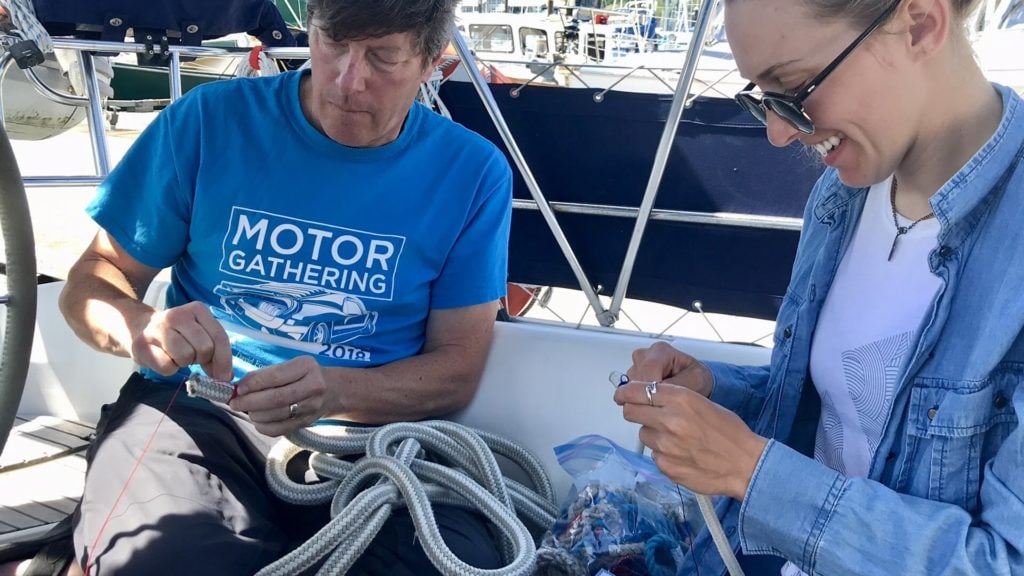
It is time to write the Sail Canada Basic Cruising Standard examination and test everything we have learnt this week. It is an anxious wait as Peter corrects our exams, but we are both elated to find out we find out we have passed.
One last order of business for this trip: A celebratory beverage at the Yacht Club's bar to toast the fair winds and following seas.
Until next time Tula!
